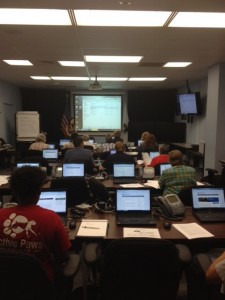The ASPCA has a great source of information titled “What would happen to your pet in an emergency?” Preparation and planning is an important aspect in keeping you and your family safe in the event of an emergency. Your Pets are your family too and including them in your preparedness plan is a must. Check out this great resource, and sign up to be on their email update list. They will send you a free Pet Safety Pack for your pets. Click the link below to get more information and your free safety pack !
ASPCA: What would happen to your pet in an emergency Safety Pack
SMART News
SMART info on Covid 19 Pandemic
While we know that at this point there is no evidence that animals play a role in the spread of this virus, we are aware that the pandemic is creating challenges for all of us as we try to ensure that animals needs are accounted for. There are many excellent resources available We recommend checking […]
Pet First Aid ? Yeah there is an app for that !
Hot Weather Pet Safety Tips
How to Respond to Wildfires & Hurricanes

